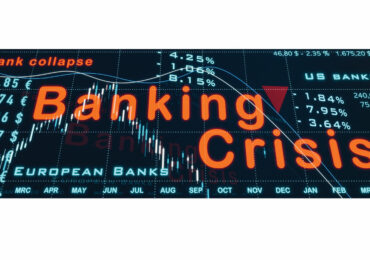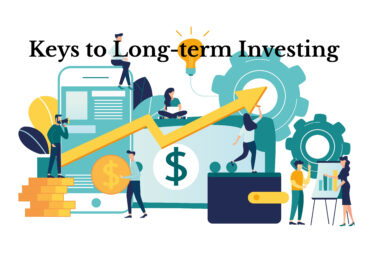The S&P 500 Index returned 1.70% and the S&P Global Broad Market Index returned -0.12% in the quarter ended September 30, 2019.[1]
Over the last three months, one of the most notable developments in the markets has been the rapid weakening of the initial public offering (IPO) market. Until recently, persistently low interest rates, strong financial markets, internet-enabled innovation, and high-profile successes such as Google, Facebook, and Amazon have led to aggressive funding by both public and private markets of fast-growing, cash-burning companies that claim to be on a mission to change the world. While many of these so-called “disruptors” are legitimately promising (though too speculative for us), financial markets have a way of taking a solid idea and marketing it to excess. This cycle is best described by Warren Buffett’s quote that “what the wise do in the beginning, fools do in the end.” Early winners achieve huge financial windfalls, drawing more and more fortune-seeking investors into the hunt. Over time, more and more investors pay higher and higher prices for securities that resemble the initial opportunities less and less. Eventually, investors pay crazy prices for businesses that are almost sure to massively underperform expectations or, in some cases, to outright fail. We may have reached this part of the cycle with 2019’s class of IPOs. A higher percentage of this year’s class of IPOs is unprofitable than at any time since 2000, the year the technology bubble burst.[2] Moreover, many of these companies don’t expect to be profitable in the near term, with losses projected to scale with revenues despite claims by management and their backers that their business models benefit from network effects.
In the last few months, investors, who had previously enthusiastically funded years of losses, appear to have run out of patience. As of October 8th, the average 2019 IPO performance has collapsed to only a 5% gain after having been up 30% as of the end of June.[3] During the same time period, the S&P 500 was down approximately one percent and maintained a gain of over 17% for the year-to-date period. Furthermore, many of the biggest, most high-profile 2019 IPOs are shaping up to be total disasters, with Uber down 35% from its IPO, Lyft down 46%, and SmileDirectClub down 51%.[4] Even more worryingly for the venture capital crowd hoping to cash out by foisting their shares on the public, investor are realizing, like the subjects who gazed upon the emperor’s new clothes in the Hans Christian Andersen fairytale, that many of the “disruptors” are actually old-economy companies and/or companies that participate in historically faddish industries. One recent example is Peloton, a company that sells exercise bikes with integrated subscription services. While bulls highlight the razor/razorblade aspects of the business model, in which the sale of a low-margin exercise bike results in a recurring revenue stream of high-margin subscription services, the high price of the “razor” at over $2,000 combined with the remarkably faddish nature of the exercise industry make us extremely skeptical about Peloton’s ultimate revenue and profit potential. Other public market investors appear to agree. Since its IPO at the end of September, the company has already lost 20% of its value.[5]
A Peak in Disruptor Hype?
However, no company demonstrates the risks of investing in cash-burning, “disruptive” companies more than WeWork, a company that essentially signs long-term leases on office space and then sub-leases to month-to-month tenants. At its core, this is an old economy business, and a risky one at that. In a recession, while WeWork will still be required to pay its lease obligations, many month-to-month tenants may experience revenues declines that cause them to opt-out of their lease renewals, leading to high vacancy rates. In fact, a predecessor to WeWork in community leasing named Regus (now IWG) went bankrupt in 2003 from just such an issue after the technology and telecom bubble burst.[6] Even worse, WeWork has been growing so fast and spending so loosely that, even in today’s relatively benign environment, the company lost 59 cents for every dollar of revenue it made in the first six months of 2019. The company’s cash burn from operating activities and capital expenditures was even higher, at 95 cents per dollar of revenue, creating annual ongoing funding needs in the billions of dollars.
Despite these facts, WeWork was able to use a charismatic founder, modest innovations in community office space design and marketing, and an ebullient environment to turn this risky, cash-burning, old-economy business into a potential $47 billion IPO.[7] Unfortunately, as a result of a host of questionable related-party transactions, a weakening global economy, and a shift in investor psychology, the public markets rejected a WeWork IPO at anywhere near this $47 billion valuation, leading the company to pull its IPO. Now, after further information about WeWork’s culture and financials have come to light and its image in the mind of investors and businesses has been tarnished, it’s questionable whether it will be able to come public at any price. In fact, debt markets are valuing the company’s junk-rated bonds at 83 cents on the dollar,[8] suggesting that investors are betting not only that the equity is worth zero but that the debt will be impaired as well. This stunning fall from a potential $47 billion equity valuation to a now reasonable probability of zero highlights the extreme risk companies and investors are taking when they depend upon the capital markets to continue funding their business models.
Concluding Thoughts
While only time will tell whether WeWork is an aberration or whether it marks the beginning of a much tighter liquidity environment, rest assured that we understand the risks inherent in depending on the capital markets, especially in the case of new companies in industries experiencing rapid and oftentimes unpredictable change (i.e. disruptors). Therefore, as always, we will continue to focus on boring, dominant companies that we believe have enduring pricing power, long-term volume opportunities, and the ability to control their own destinies through conservative leverage and strong ongoing cash-generation. In fact, for just such an example of this preference, see Brian’s recent interviews on TDAmeritrade Network and Bloomberg comparing WeWork’s business model and then $47 billion valuation to those of our favorite stock in the commercial real estate industry, CBRE Group.
Before we sign-off, we’re excited to let you know that we’ve recently completed a major revamp of our adviser website. Through our client letters and various media appearances, we’ve created a lot of content over the years. Unfortunately, it hasn’t always been easy to quickly access. We’ve worked hard to remedy this issue, so we hope you’ll check out our new website at www.ycginvestments.com!
Sincerely,
The YCG Team
Disclaimer: The specific securities identified and discussed should not be considered a recommendation to purchase or sell any particular security nor were they selected based on profitability. Rather, this commentary is presented solely for the purpose of illustrating YCG’s investment approach. These commentaries contain our views and opinions at the time such commentaries were written and are subject to change thereafter. The securities discussed do not necessarily reflect current recommendations nor do they represent an account’s entire portfolio and in the aggregate may represent only a small percentage of an account’s portfolio holdings. A complete list of all securities recommended for the immediately preceding year is available upon request. These commentaries may include “forward looking statements” which may or may not be accurate in the long-term. It should not be assumed that any of the securities transactions or holdings discussed were or will prove to be profitable. S&P stands for Standard & Poor’s. All S&P data is provided “as is.” In no event, shall S&P, its affiliates or any S&P data provider have any liability of any kind in connection with the S&P data. MSCI stands for Morgan Stanley Capital International. All MSCI data is provided “as is.” In no event, shall MSCI, its affiliates or any MSCI data provider have any liability of any kind in connection with the MSCI data. Past performance is no guarantee of future results.
[1] For information on the performance of our separate account composite strategies, please visit www.ycginvestments.com/performance. For information about your specific account performance, please contact us at (512) 505-2347 or email [email protected]. All returns are in USD unless otherwise stated.
[2] See https://www.cnbc.com/2019/09/18/this-years-ipo-class-is-the-least-profitable-of-any-year-since-the-tech-bubble.html.
[3] See https://www.vox.com/recode/2019/10/8/20903393/postmates-ipo-market-wall-street-silicon-valley-direct-listing-wework-uber-unicorns and https://www.reuters.com/article/us-usa-ipo/after-wework-debacle-ipo-market-slams-brakes-on-unprofitable-companies-idUSKBN1WC1WY.
[4] As of October 8th.
[5] As of October 8th.
[6] See https://en.wikipedia.org/wiki/IWG_plc and https://www.bostonglobe.com/business/2019/08/10/wework-rose-fast-short-term-leases-but-can-stick-around-long-term/C8azR0zOccvfB15WwpFaQO/story.html.
[7] See https://www.businessinsider.com/definitive-history-wework-company-valuation-2019-9.
[8] See https://www.reuters.com/article/us-wework-bonds-shortsellers/short-interest-in-wework-bonds-jumps-to-record-high-idUSKBN1WI2E5.




